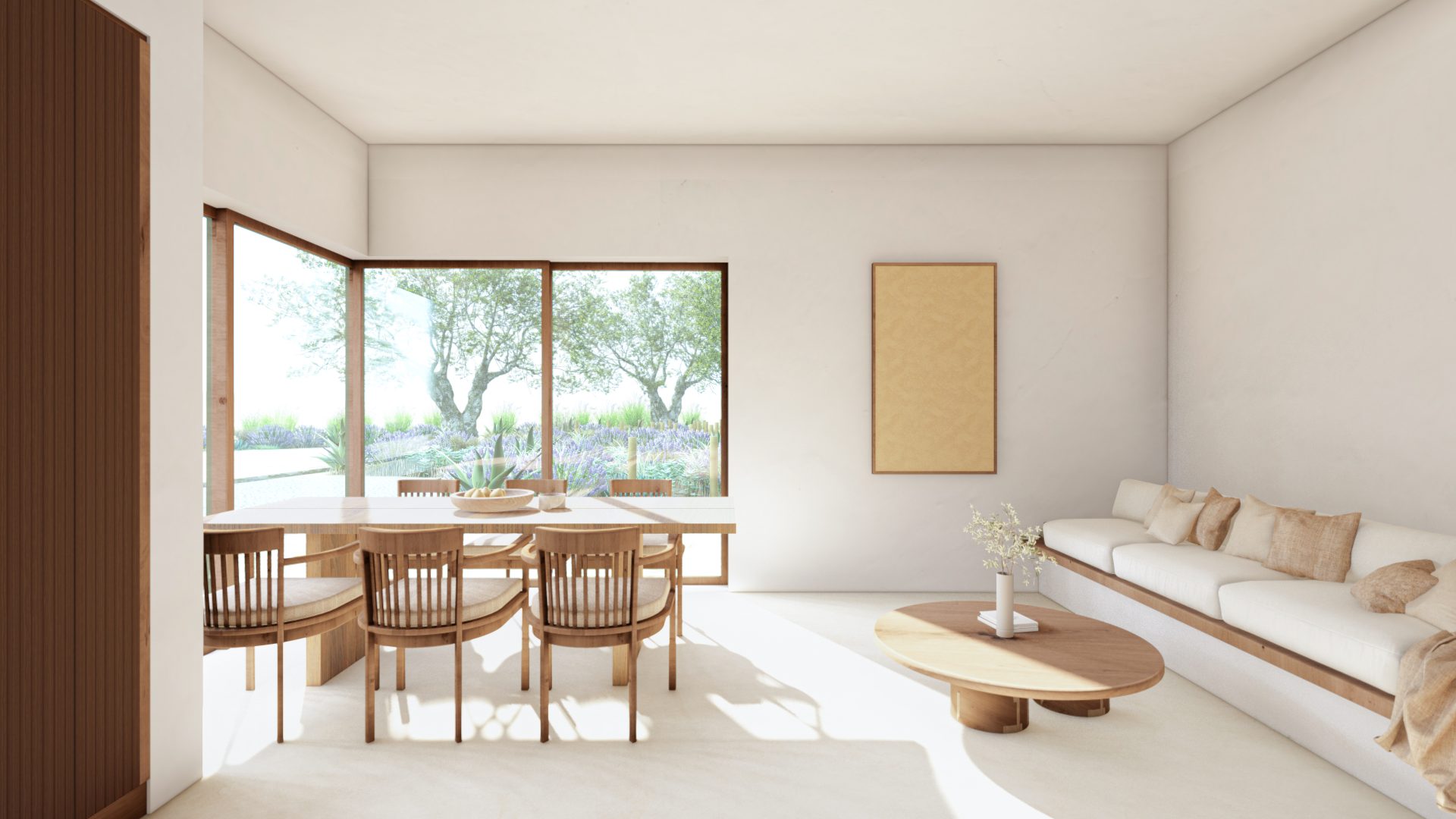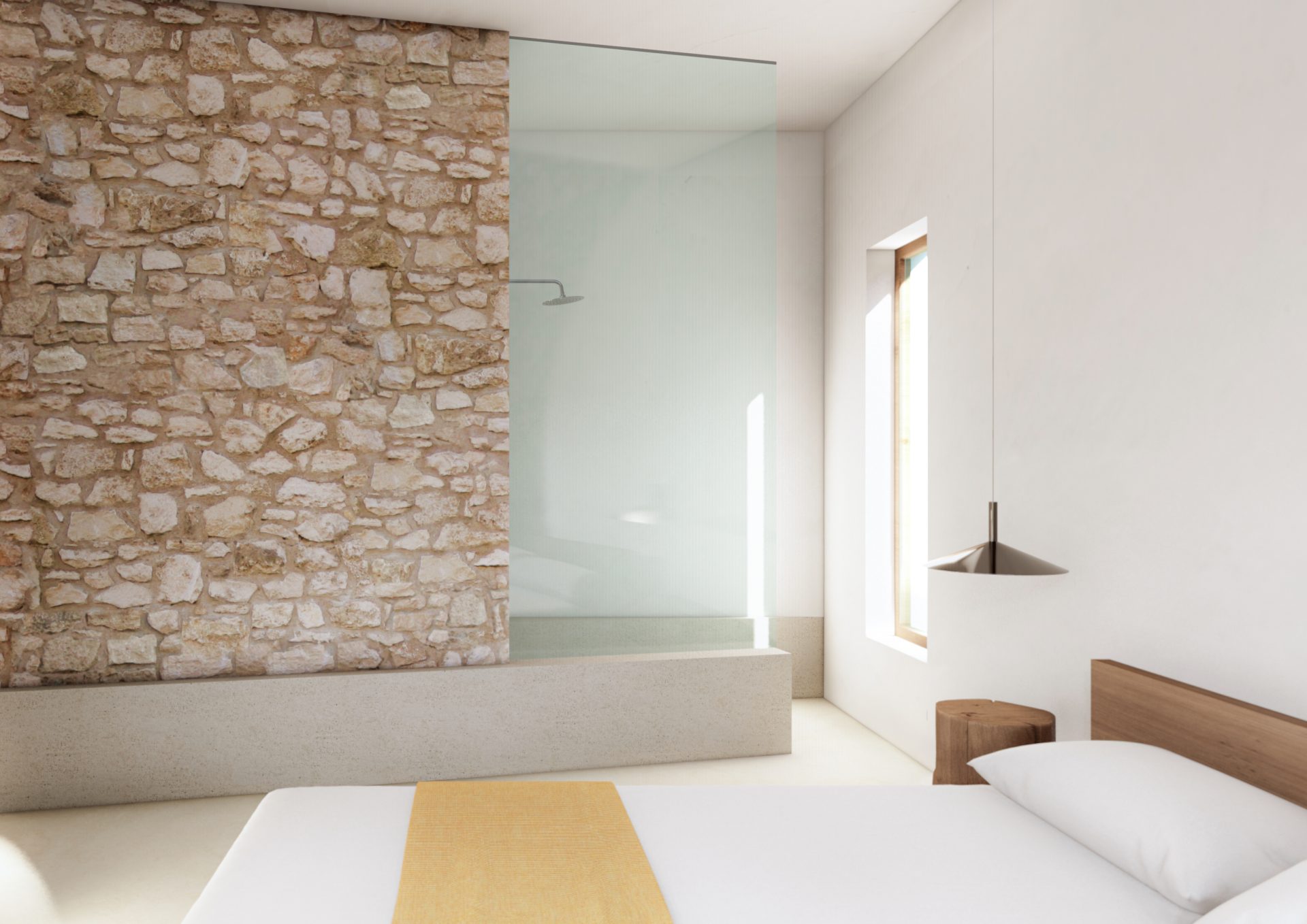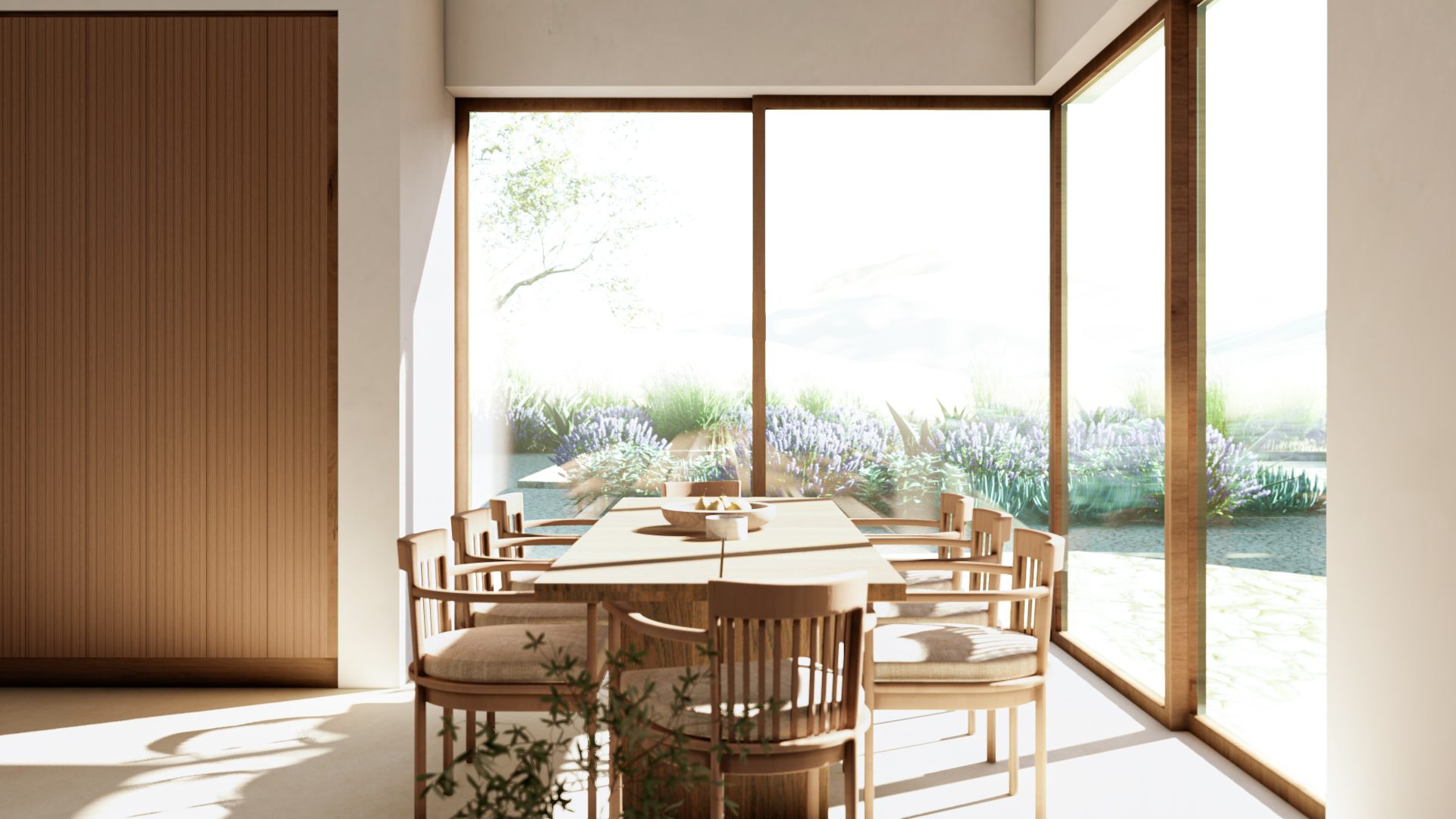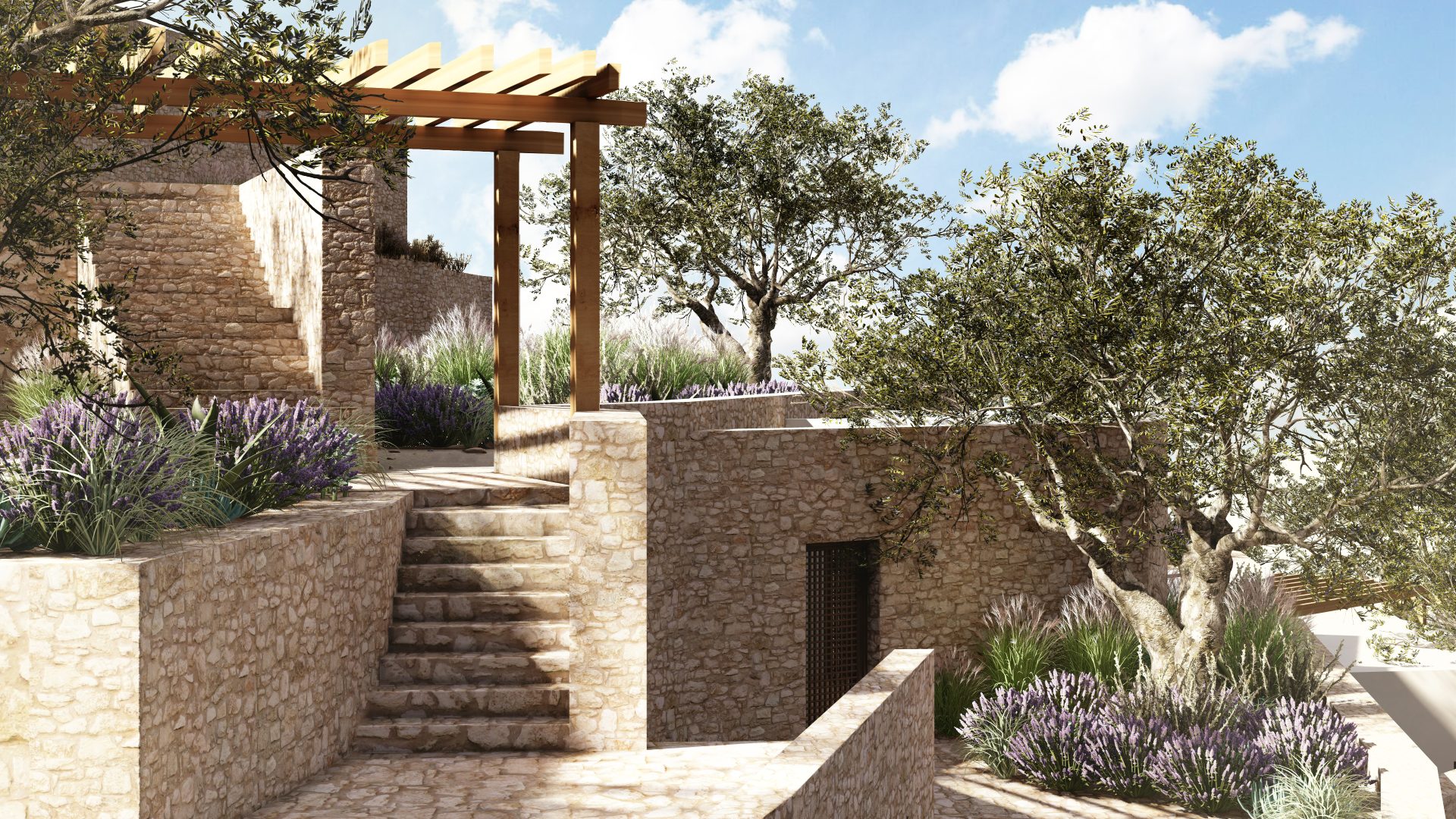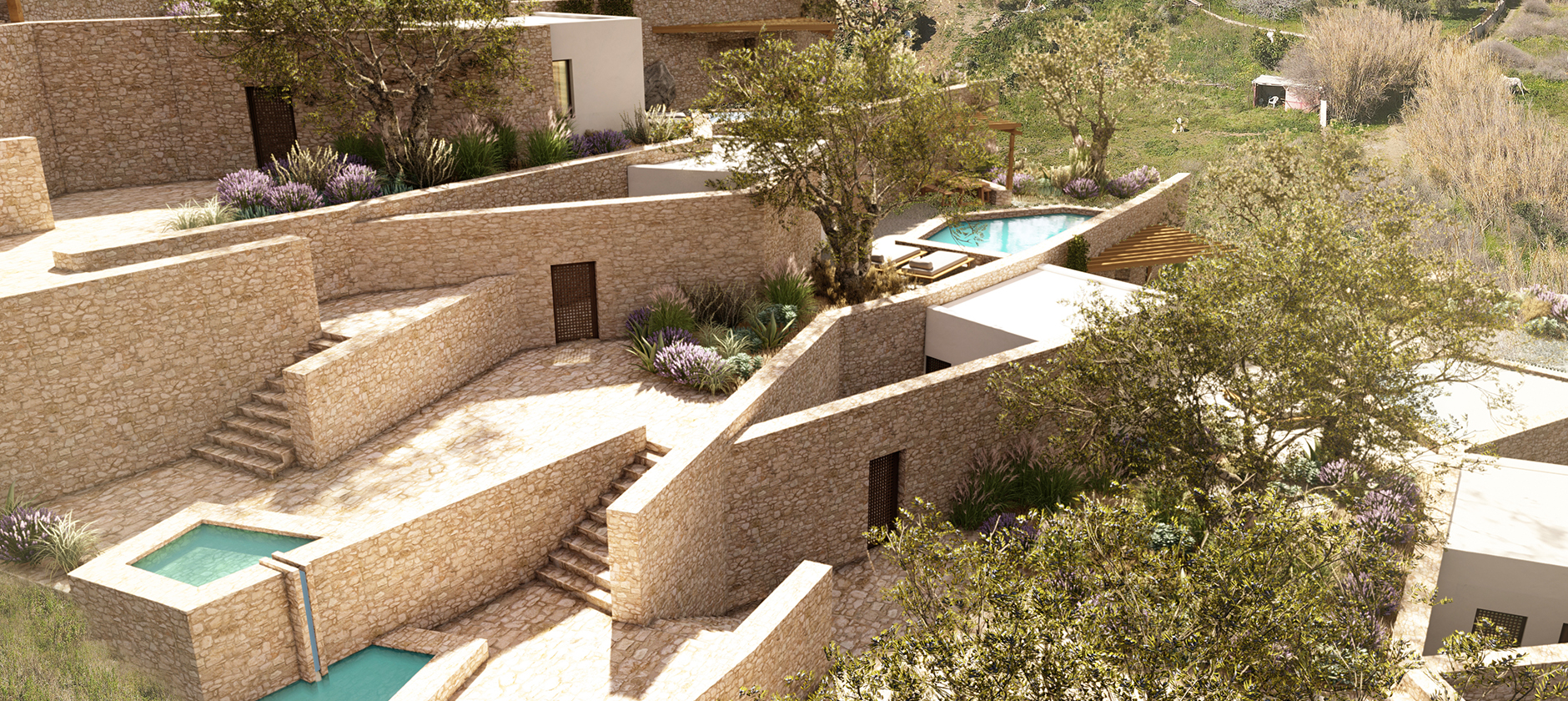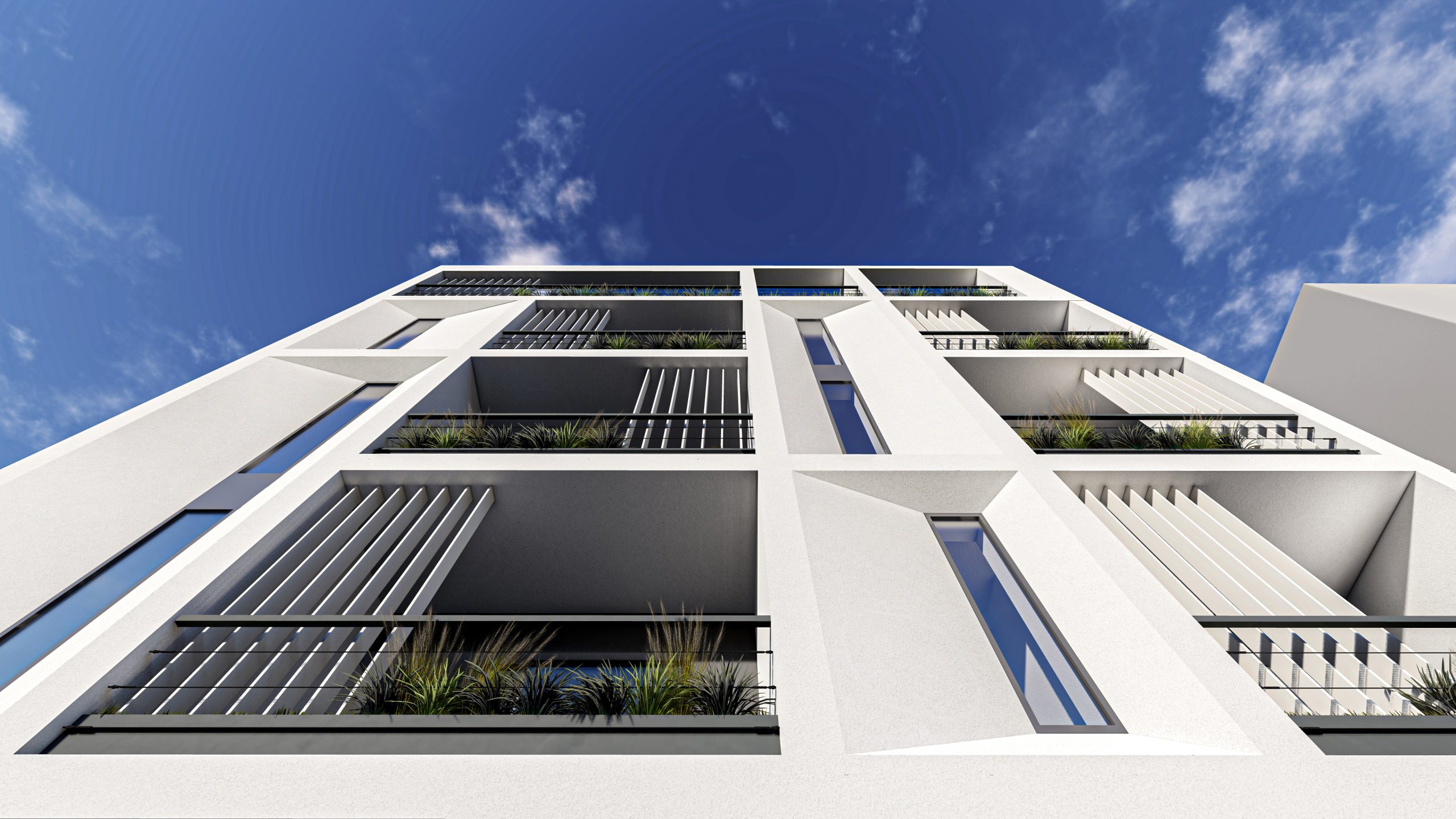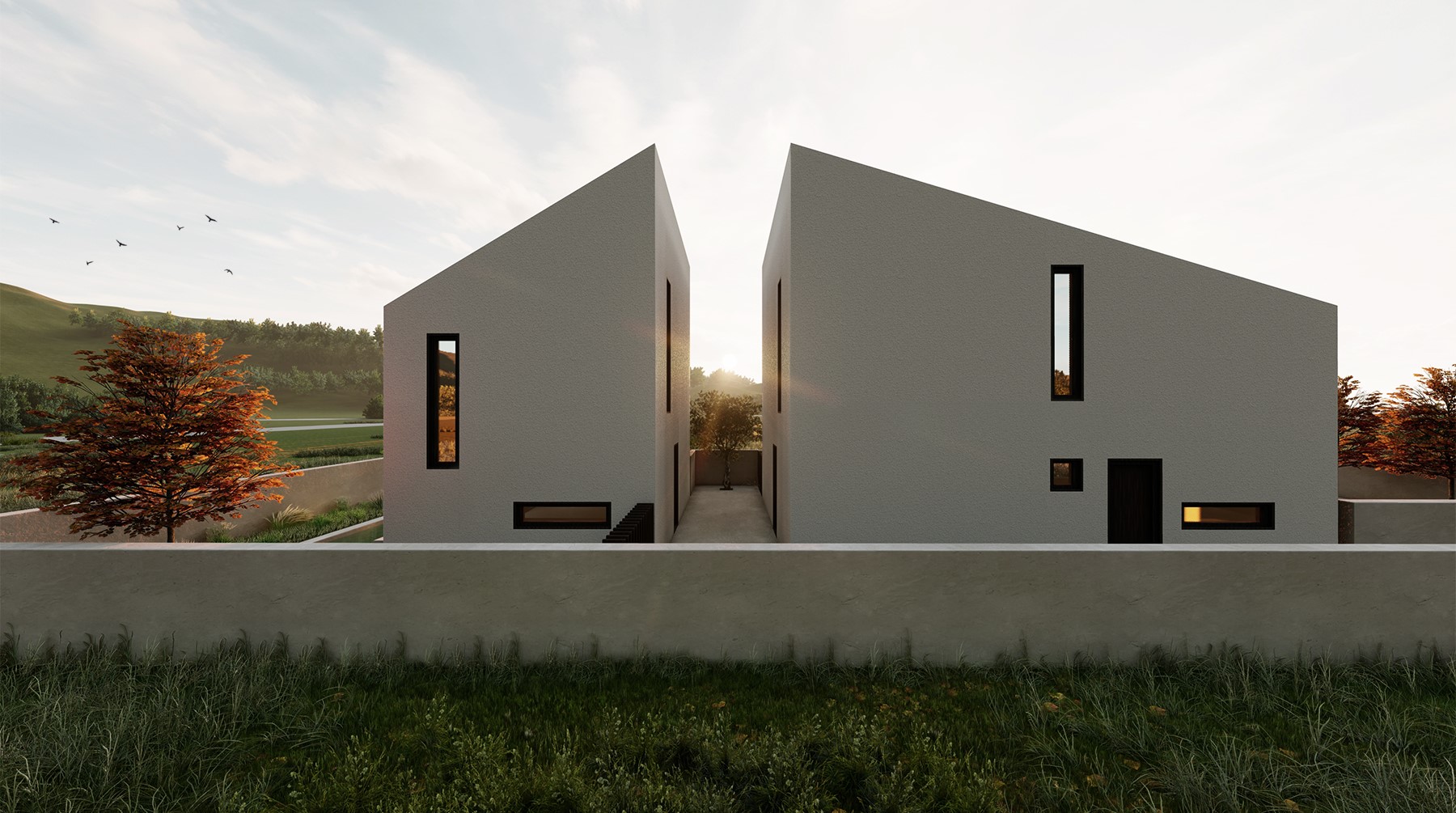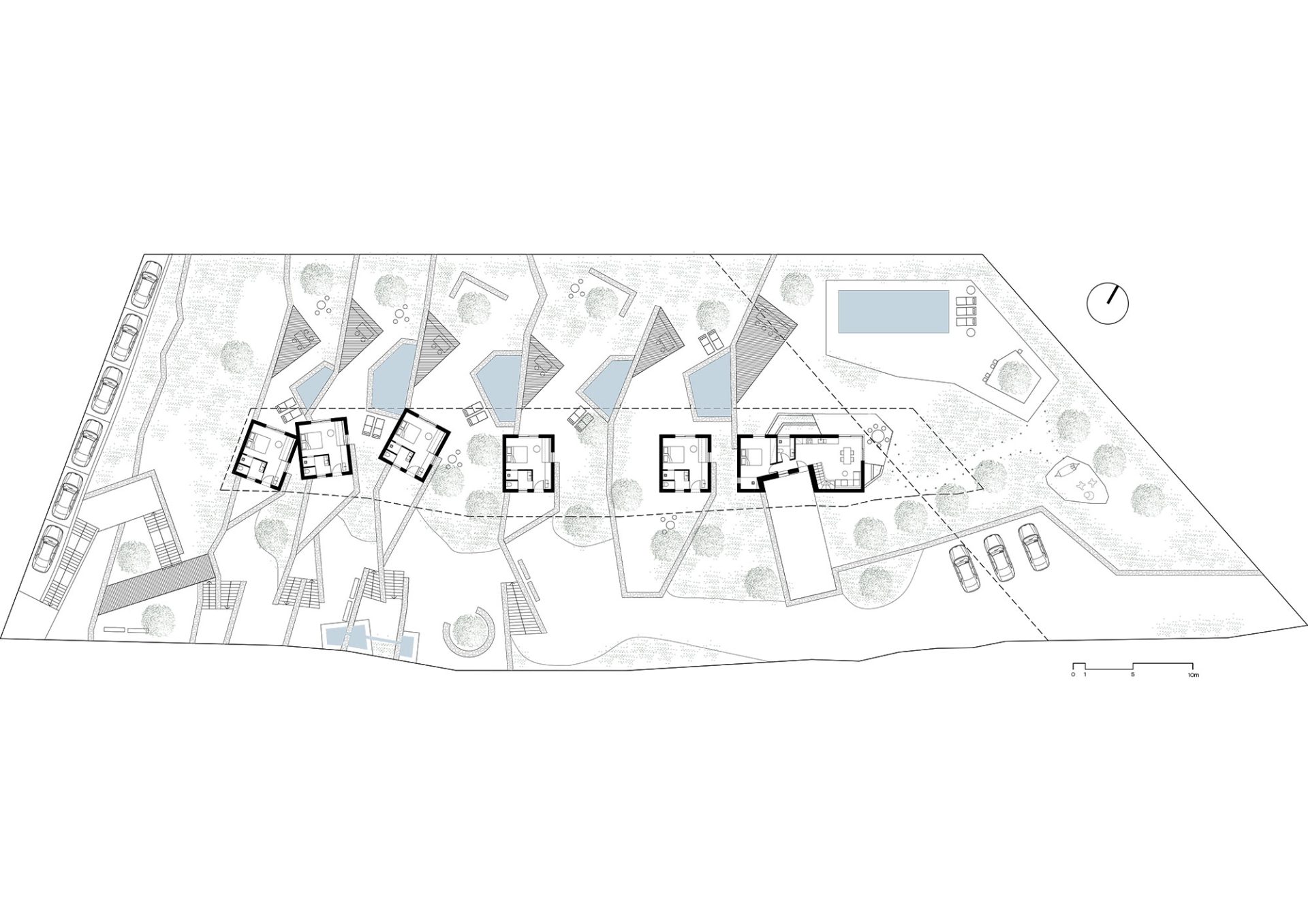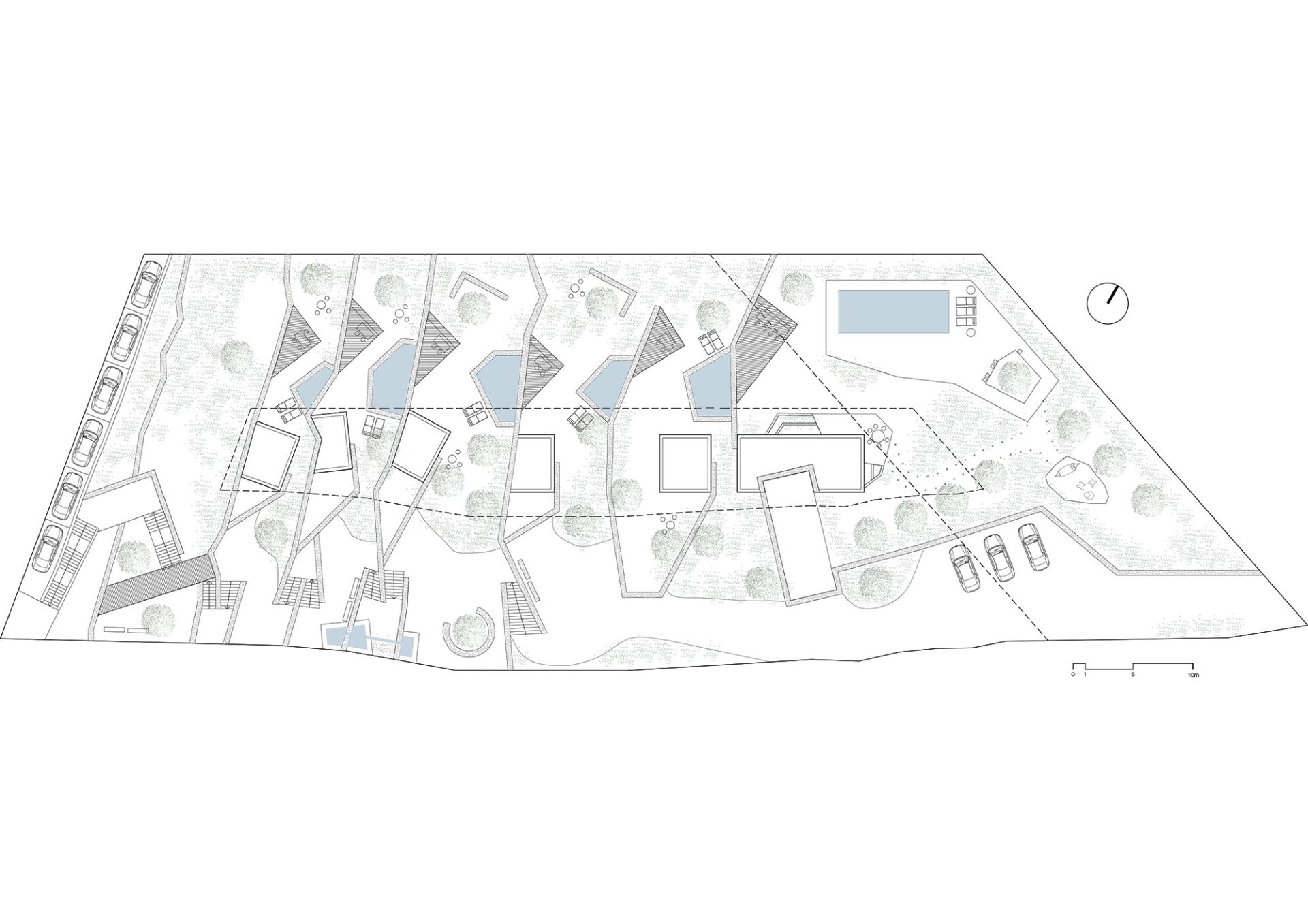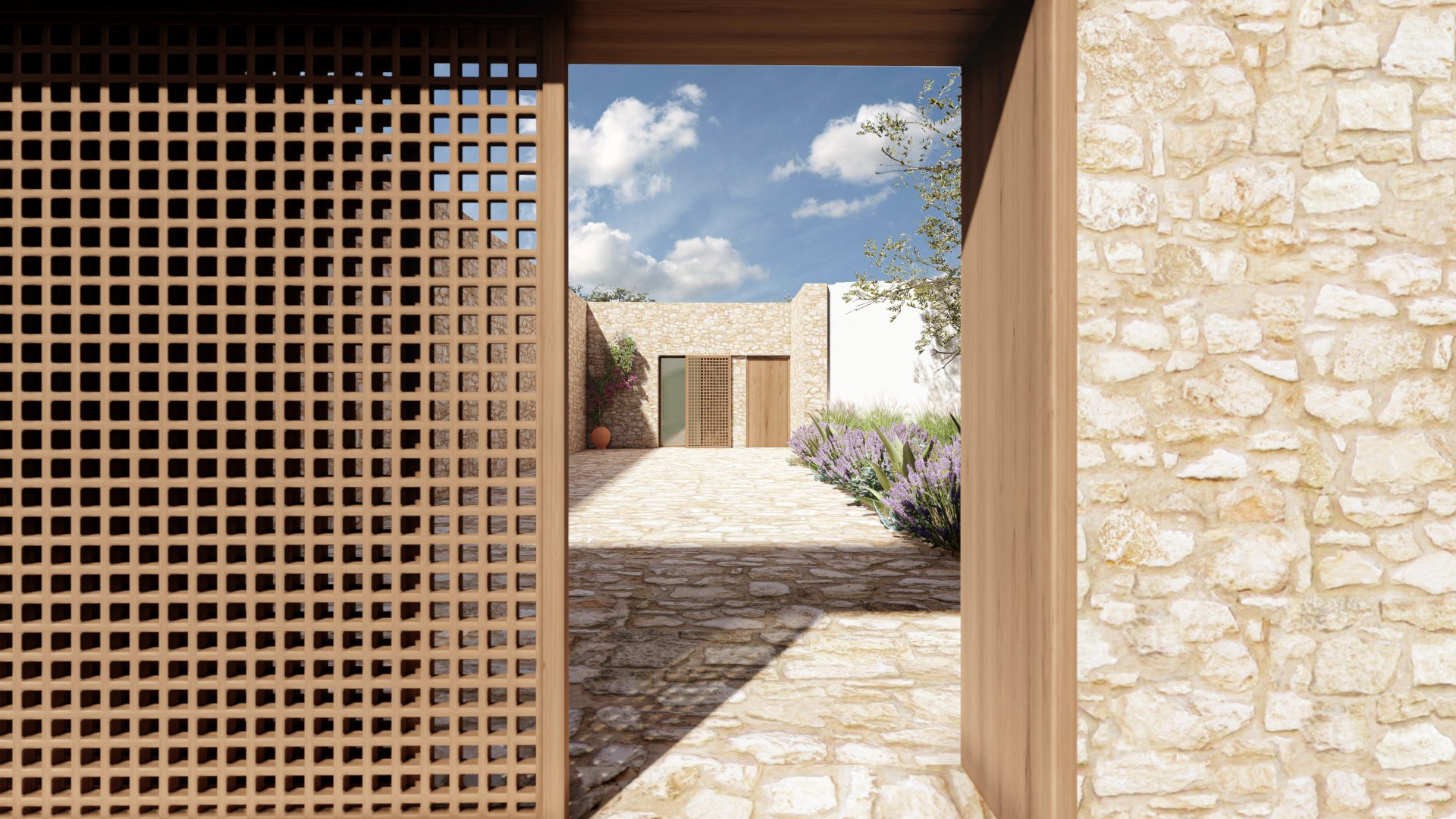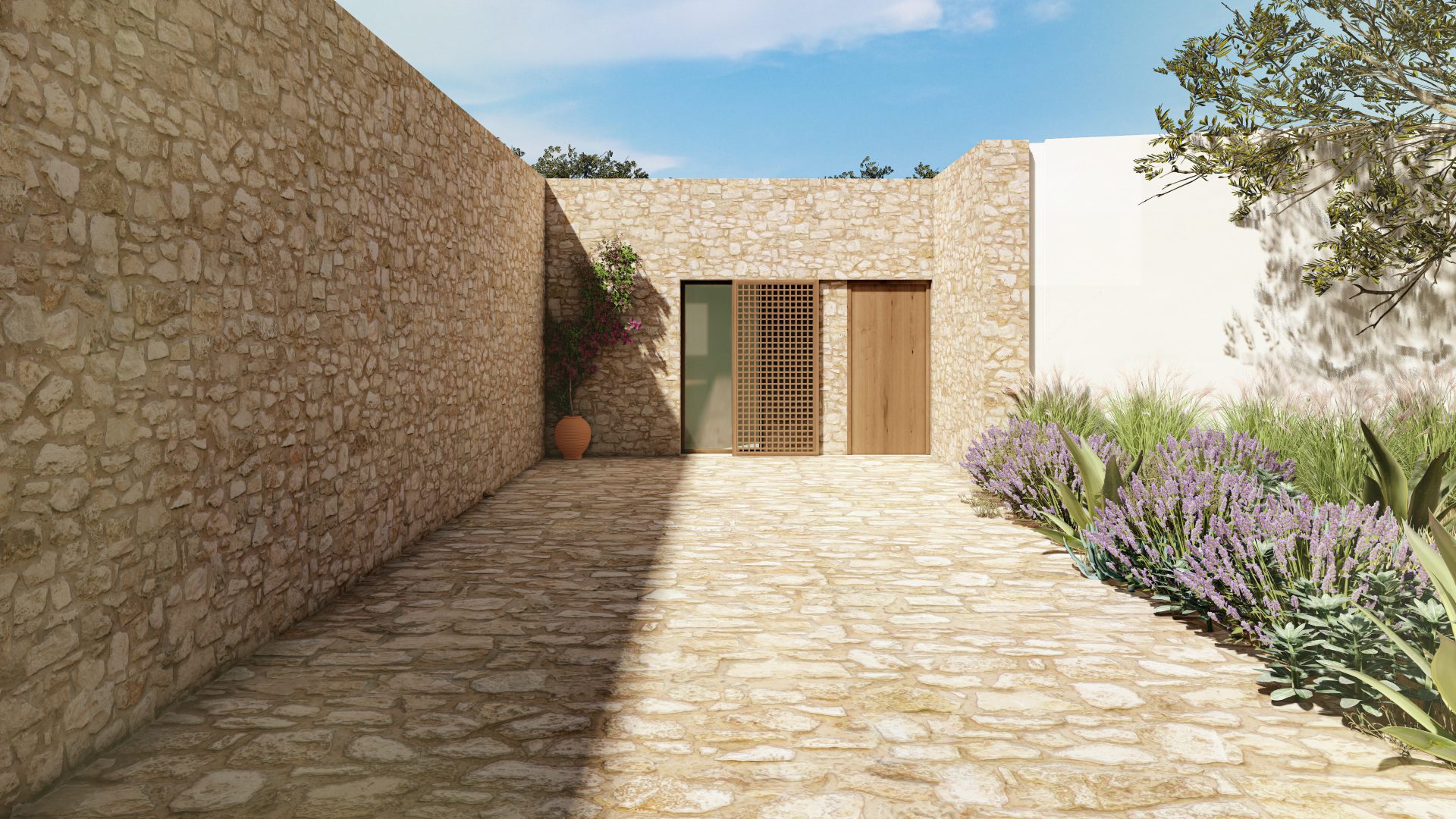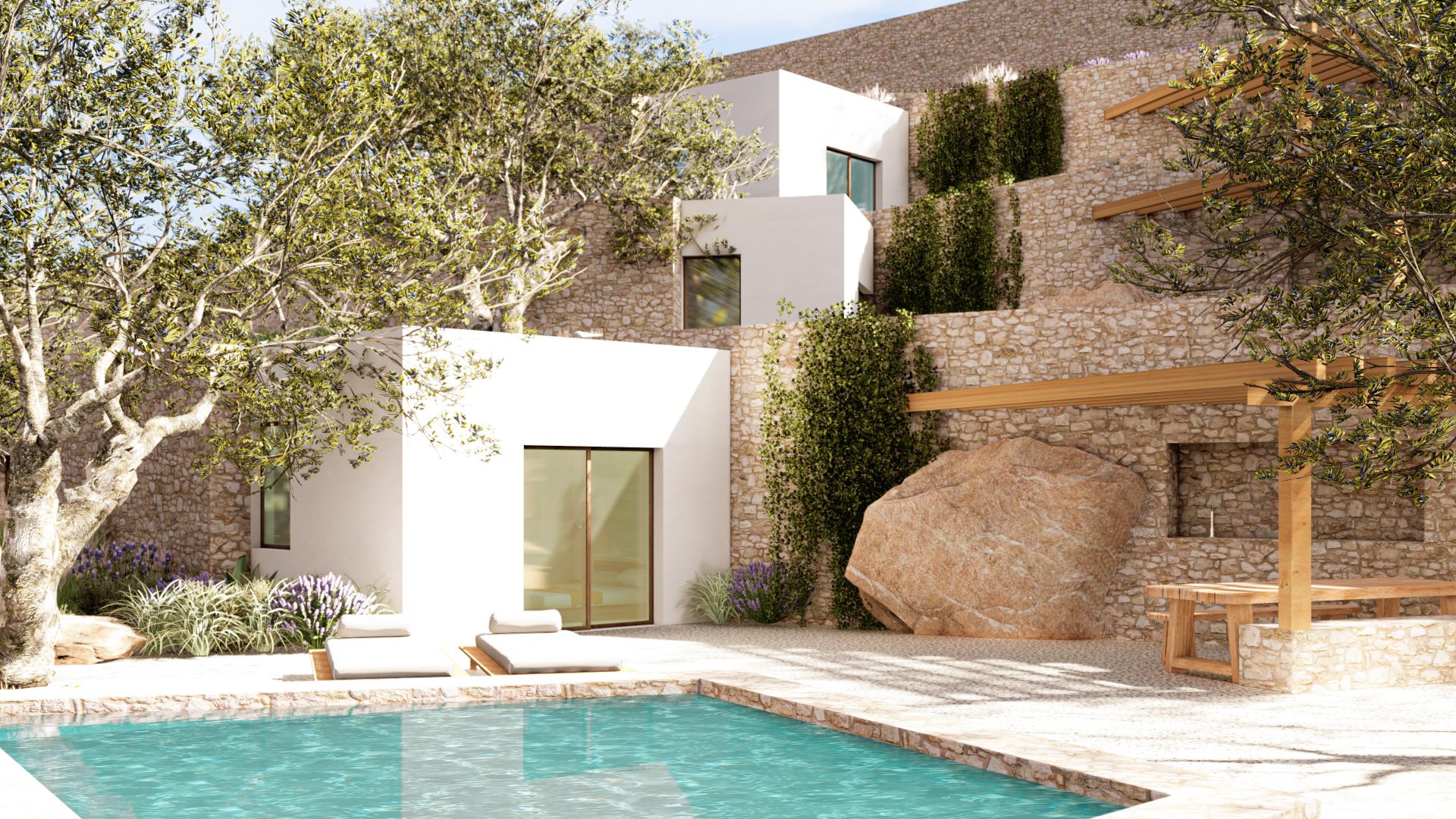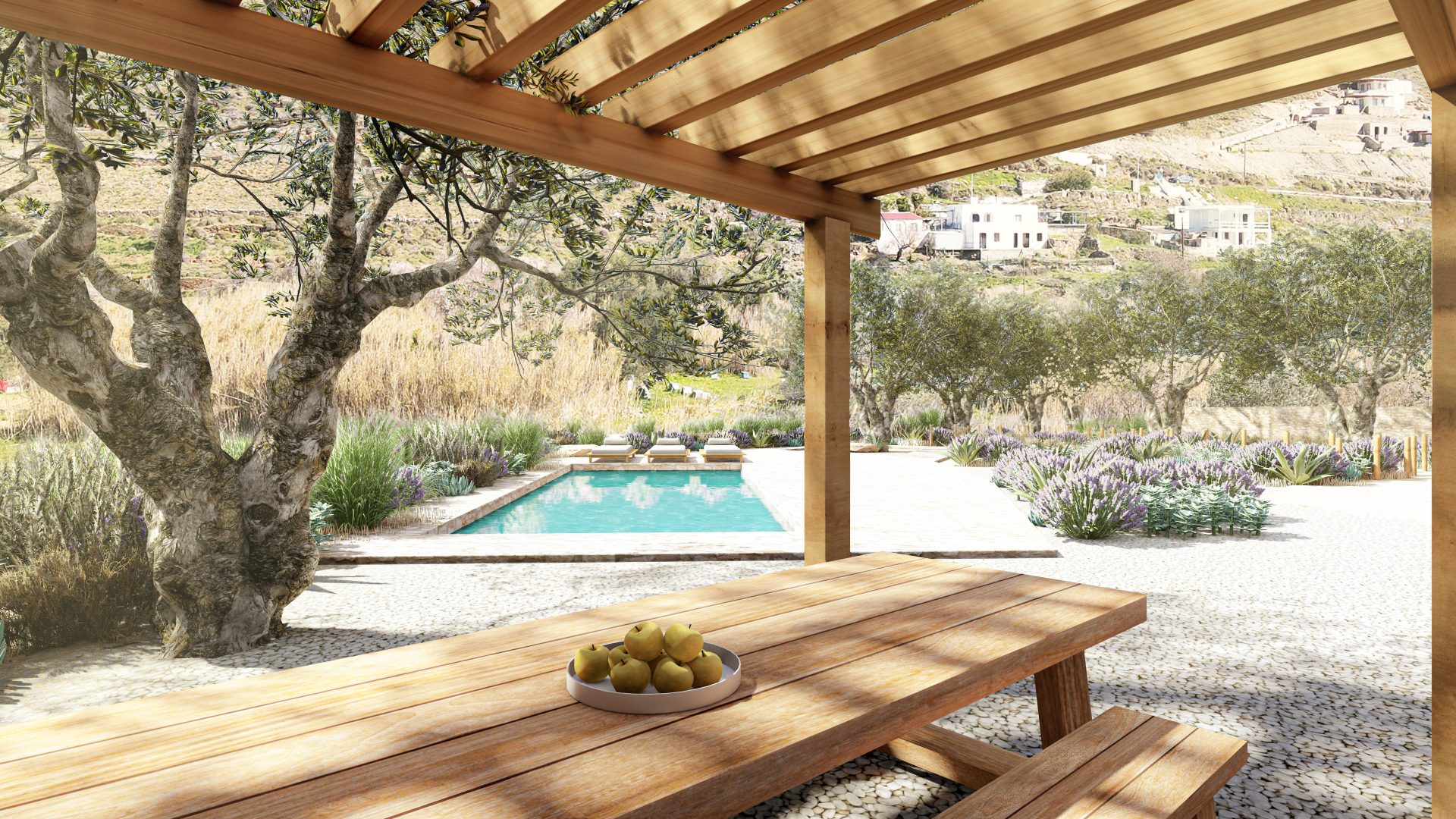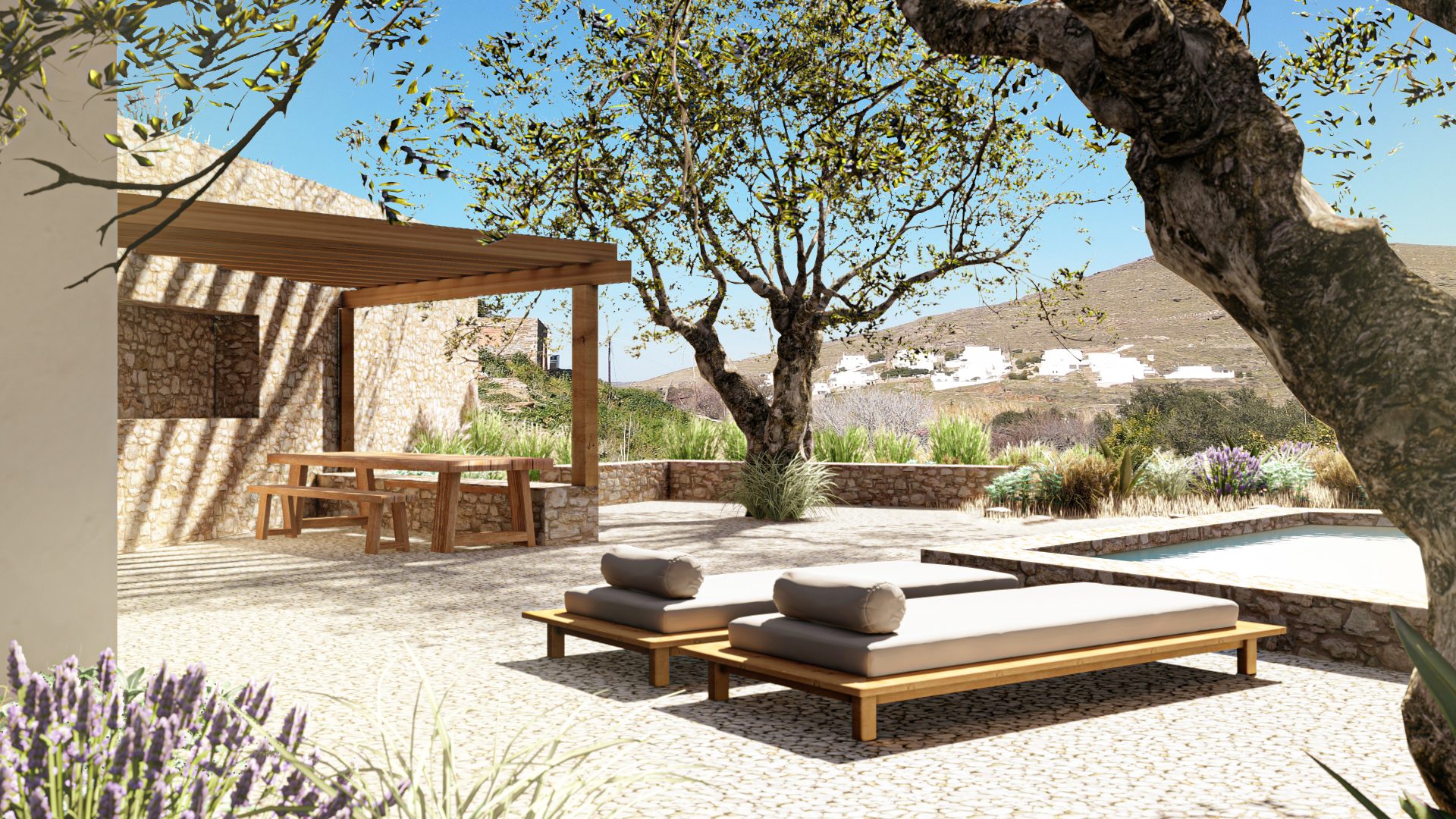Location:
Kythnos, Cyclades, Greece
Completion Year:
Due in 2025
Gross Built Area:
197 m2
The purpose of this composition is the construction of a complex of 6 (six) autonomously serviced tourist accommodations in the area of Episkopi, Kythnos. The central idea of the composition is defined by the natural and anthropogenic data of the site and is translated as a gesture that emphasizes the earthy relationship of the whole with the relief. Characteristic of the relief are the dry stone walls, which function as strong traces on the ground, creating terraces. On these terraces, new incisions develop in dialogue with the pre-existing ones, creating new imaginary terraced monoliths. The monolithic volumes of the residences follow the indeterminacy of the old and new incisions, resulting in their fragmentation. At the same time, the altitude difference of the residences is defined by the terraces and the slope of the terrain, offering additional privacy. In the extension of the terraces, external courtyards are formed with pools and pergolas, separating the public from the private space.

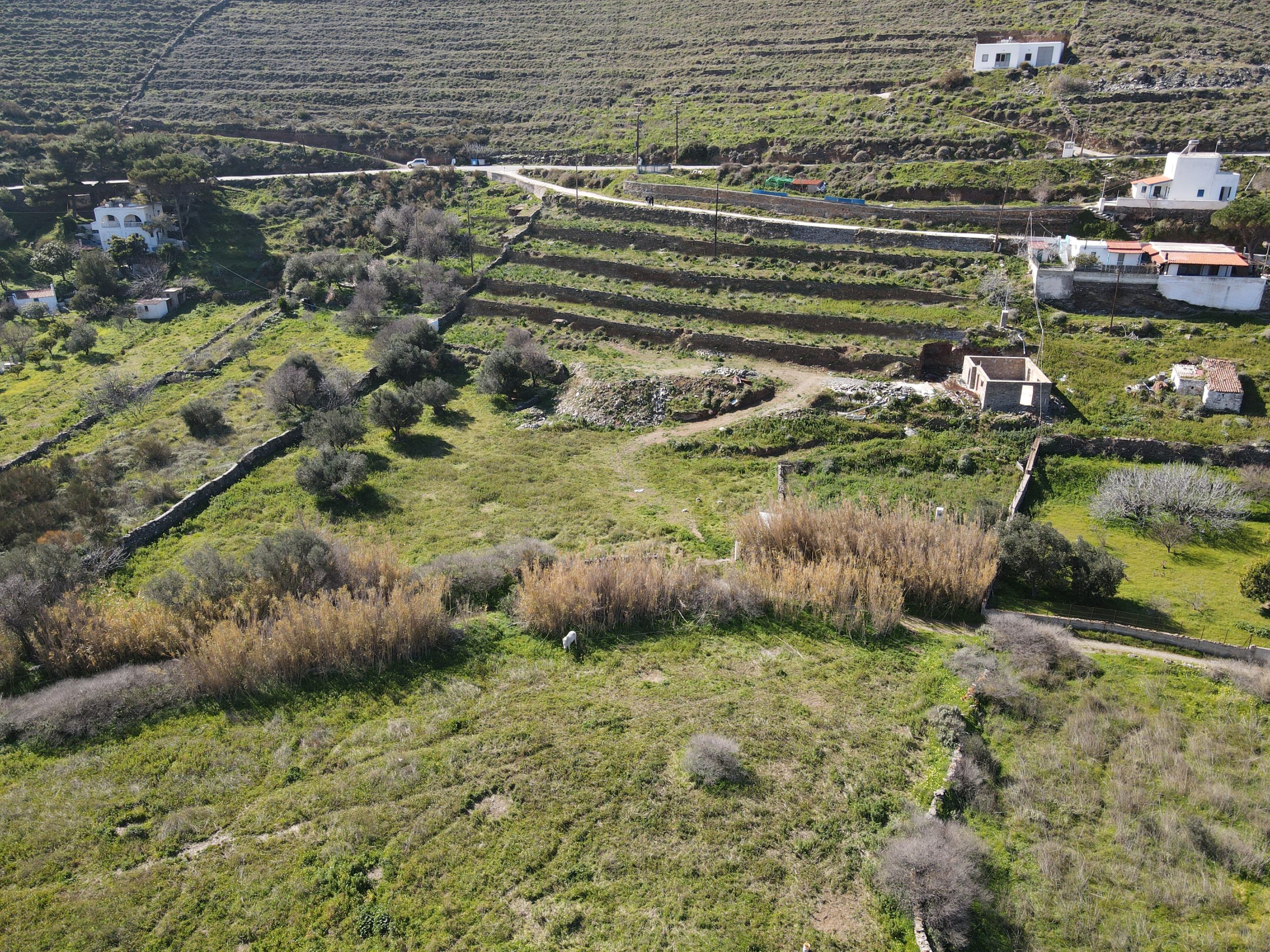
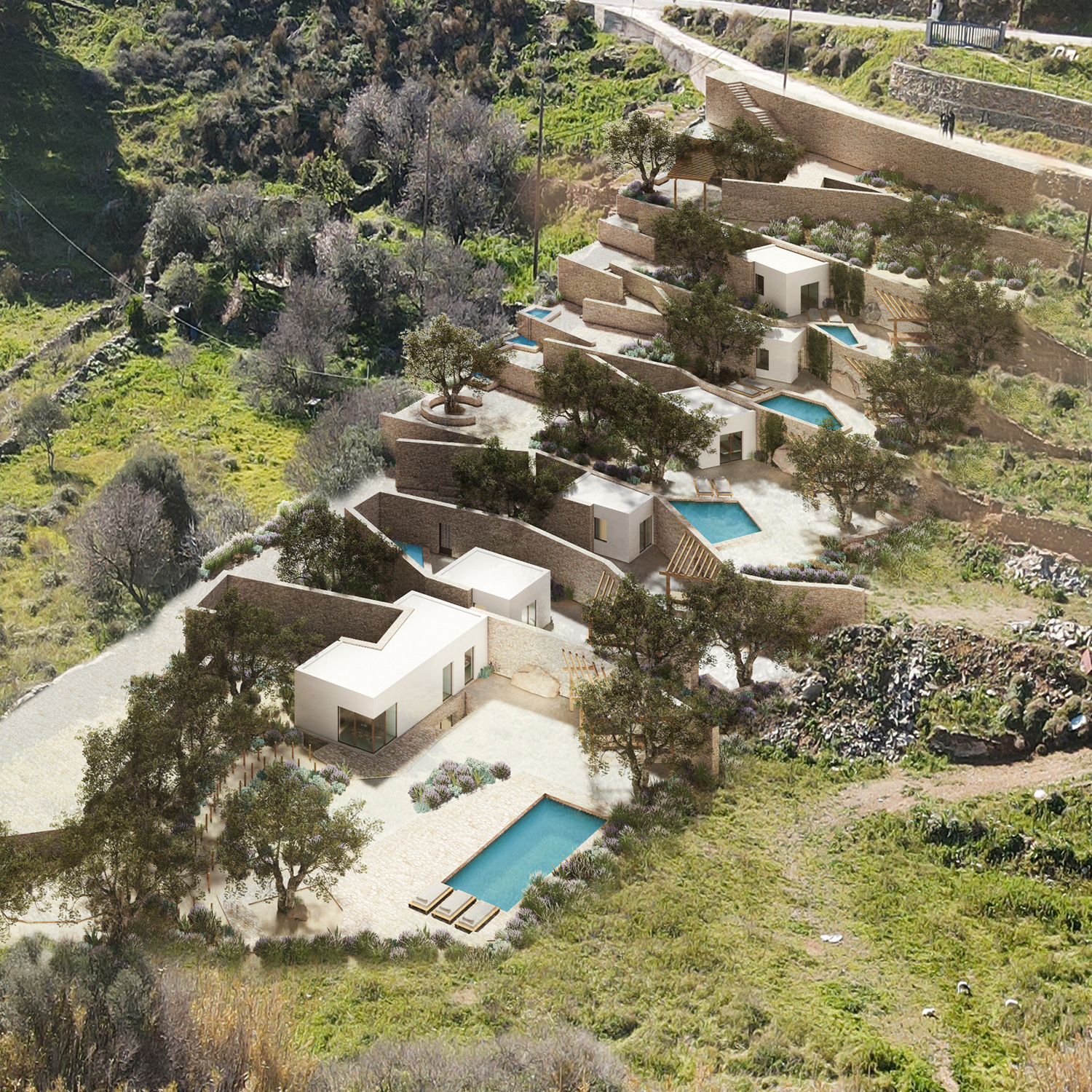
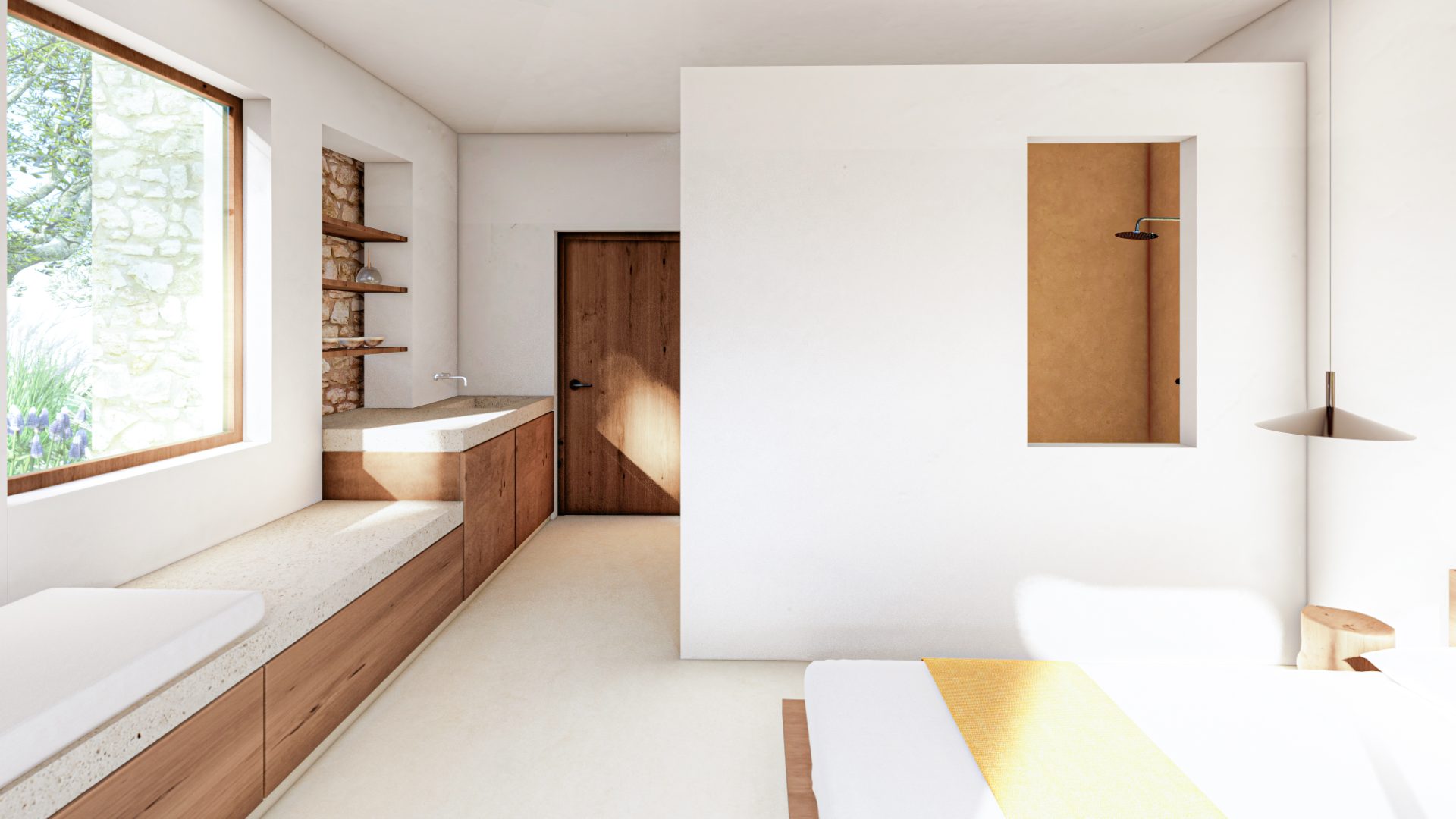
As for the functional resolution, five of the rooms follow the same typology, while on the lower level we find the largest room which has a basement with auxiliary spaces. The movements in the complex are also defined as terraced lines following the same design principles as the dry stone walls. The platforms formed in between create small stopping areas and at the same time, the entrances of the apartments. The existing vegetation on the site is preserved, enhanced in certain points to provide greater shading on the plot. The choice of materials emerged from the need for the composition to integrate into the landscape of Kythnos in a contemporary way. For this reason, coatings of white and earthy shades and visible stone were used, translating traditional techniques into contemporary terms. Therefore, white plaster and untreated stonework dominate the facades, which, combined with the clean volumetry, achieve integration into the natural and anthropogenic landscape.
